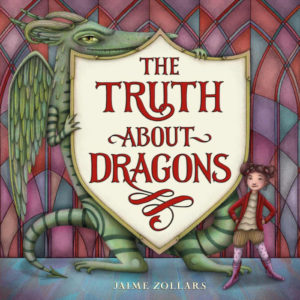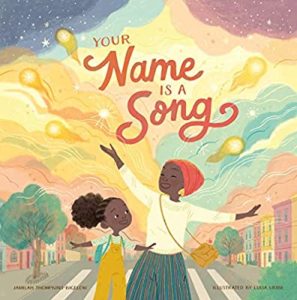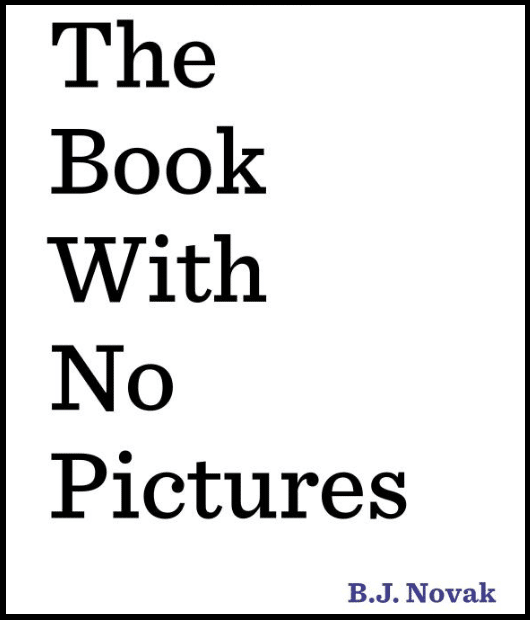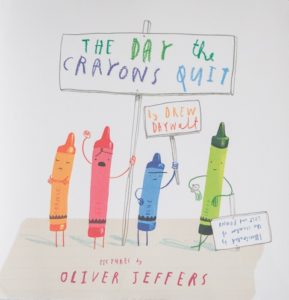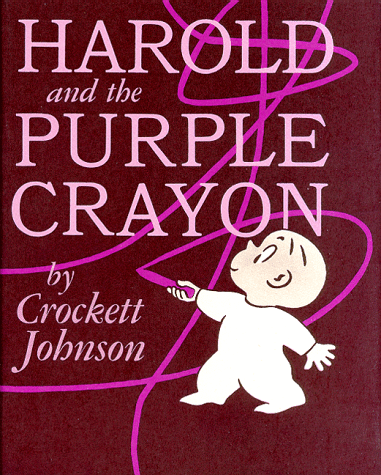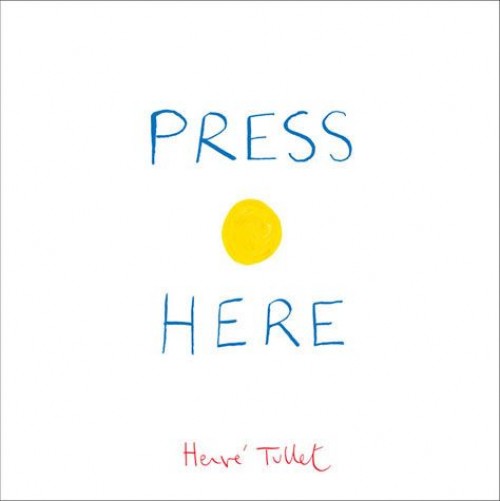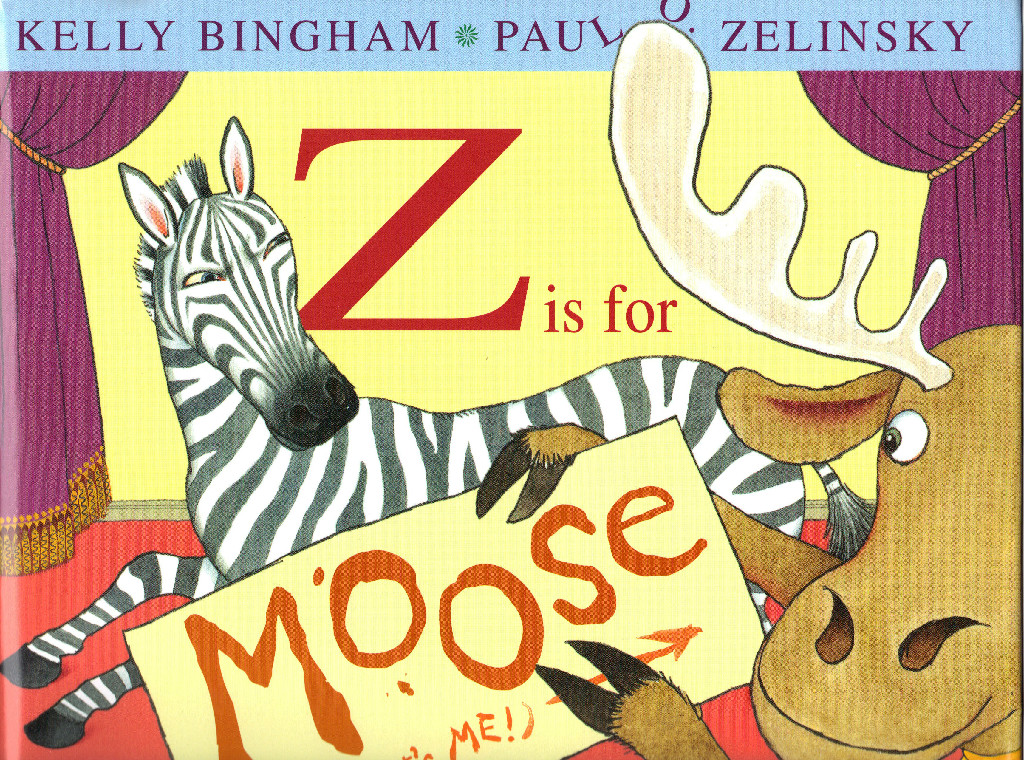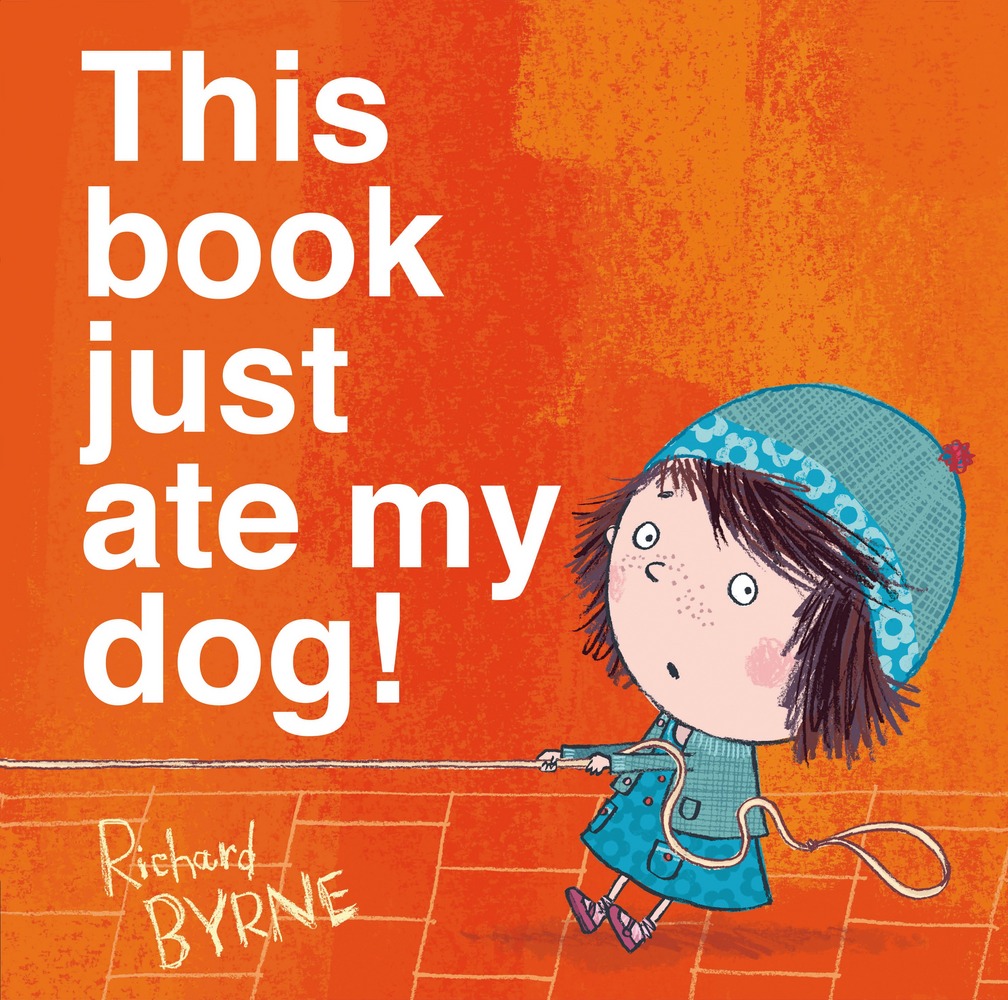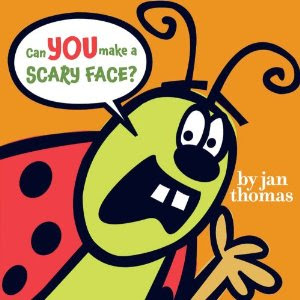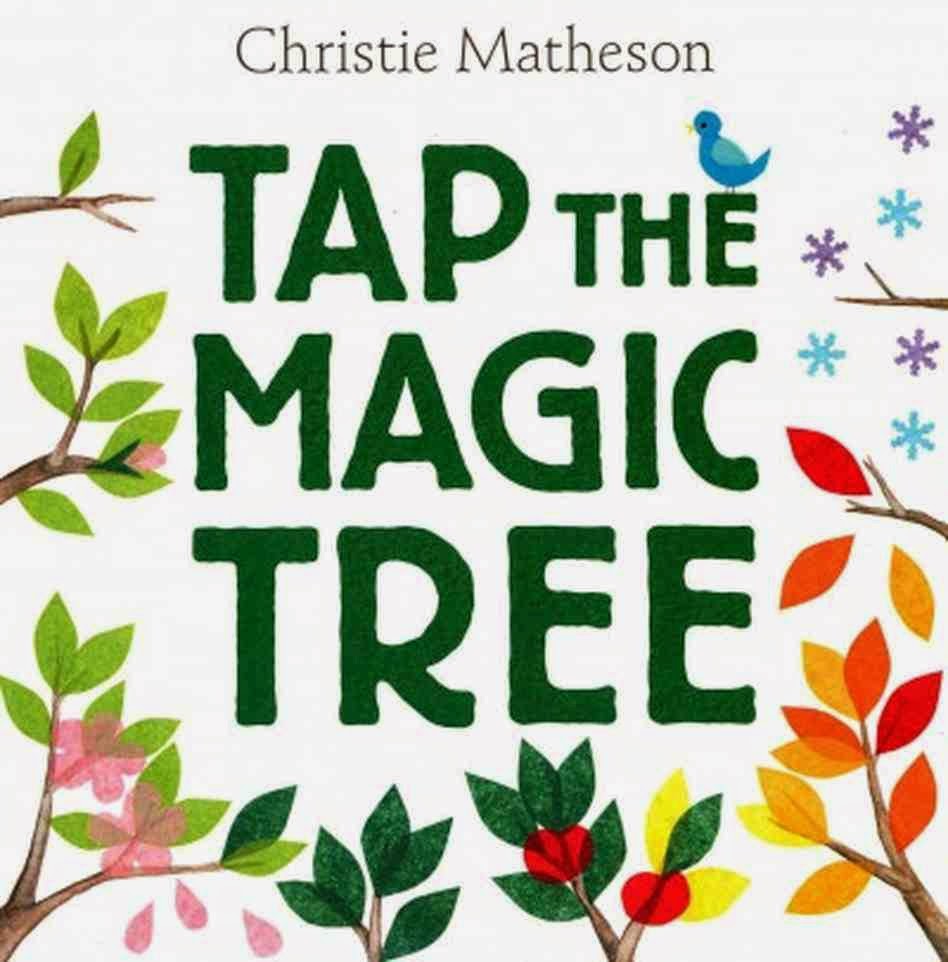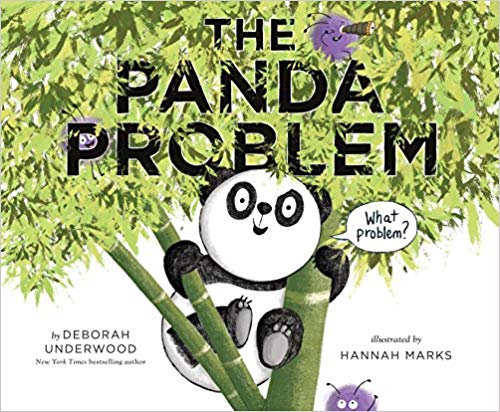It’s back-to-school time, so what better way to celebrate the awesome teachers in our lives than to put together a list of fun picture books about teachers, schools, and students?
If I missed any of your favorites, drop a note in the comments. Enjoy!
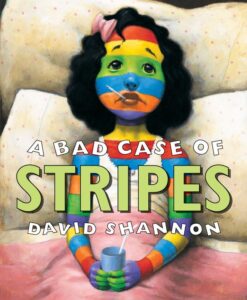 A Bad Case of Stripes by David Shannon (March 1998)
A Bad Case of Stripes by David Shannon (March 1998)
From Goodreads: “‘What we have here is a bad case of stripes. One of the worst I’ve ever seen!’ Camilla Cream loves lima beans, but she never eats them. Why? Because the other kids in her school don’t like them. And Camilla Cream is very, very worried about what other people think of her. In fact, she’s so worried that she’s about to break out in…a bad case of stripes!”
Pages: 32
Reading Age: 3–7
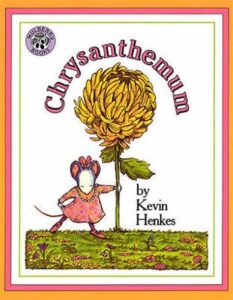 Chrysanthemum by Kevin Henkes (September 1991)
Chrysanthemum by Kevin Henkes (September 1991)
From Goodreads: “Chrysanthemum thinks her name is absolutely perfect—until her first day of school. “You’re named after a flower!” teases Victoria.
“Let’s smell her,” says Jo.
Chrysanthemum wilts. What will it take to make her blossom again?”
Pages: 32
Reading Age: 2–6
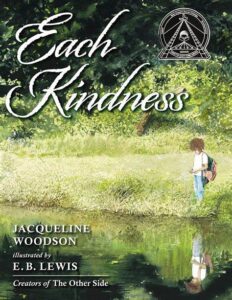 Each Kindness by Jacqueline Woodson, illustrated by E.B. Lewis ? (October 2012)
Each Kindness by Jacqueline Woodson, illustrated by E.B. Lewis ? (October 2012)
From Goodreads: “Chloe doesn’t really know why she turns away from the new girl, Maya, when Maya tries to befriend her. And every time Maya asks if she can play with Chloe and the other girls, the answer is always no. So Maya ends up playing alone. And then one day she’s gone.
When Chloe’s teacher gives a lesson about how even small acts of kindness can change the world, Chloe is stung by the opportunity that’s been lost. How much better could it have been if she’d just shown Maya a little kindness and opened her heart to friendship?”
Pages: 32
Reading Age: 6–10
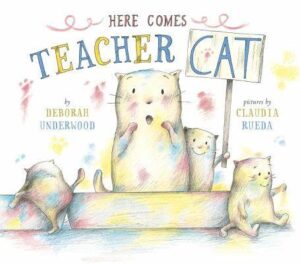 Here Comes Teacher Cat by Deborah Underwood, illustrated by Claudia Rueda (August 2017)
Here Comes Teacher Cat by Deborah Underwood, illustrated by Claudia Rueda (August 2017)
From Goodreads: “It’s back to school for the New York Times bestselling Cat when he steps in as a substitute teacher.
Cat is not pleased to be tapped as substitute teacher. Not only is it cutting into his naptime, but a roomful of kittens is a little … much. At school, Cat follows the lesson plan of music, building, and painting–only in gradually more mischief-making Cat style. By the end, Cat has learned a thing or two about inspiring others by being himself. But even more heart-melting and humorous is what these adorable kittens have learned from Cat.”
Pages: 88
Reading Age: 3–5
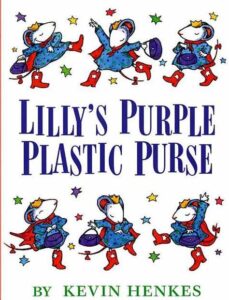 Lilly’s Purple Plastic Purse by Kevin Henkes (May 1996)
Lilly’s Purple Plastic Purse by Kevin Henkes (May 1996)
From Goodreads: “Hooray For Lilly!
Lilly loves everything about school, especially her teacher, Mr. Slinger. But when Lilly brings her new favorite things
movie star sunglasses (complete with diamonds)
three quarters (shiny ones)
a purple plastic purse (it plays lively music when opened)
to school, and insists on showing them to everyone even though it is not Sharing Time, Mr. Slinger is not amused. In fact, Mr. Slinger confiscates her prized possessions. Lilly’s fury leads to revenge and then to remorse as she sets out to make amends, in this modern classic by the beloved Kevin Henkes.”
Pages: 40
Reading Age: 3–6
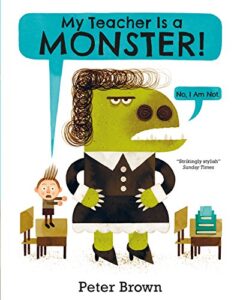 My Teacher Is a Monster by Peter Brown (July 2014)
My Teacher Is a Monster by Peter Brown (July 2014)
From Goodreads: “Bobby has a problem. You see, his teacher is a monster. But when Bobby runs into his teacher outside of school, he learns there is more to her than meets the eye.”
Pages: 40
Reading Age: 3–9
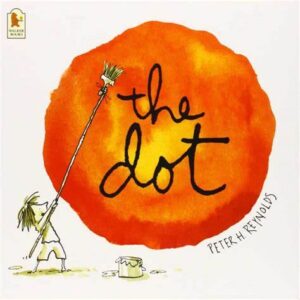 The Dot by Peter H. Reynolds (September 2003)
The Dot by Peter H. Reynolds (September 2003)
From Goodreads: “With a simple, witty story and free-spirited illustrations, Peter H. Reynolds entices even the stubbornly uncreative among us to make a mark — and follow where it takes us.
Her teacher smiled. “Just make a mark and see where it takes you.”
Art class is over, but Vashti is sitting glued to her chair in front of a blank piece of paper. The words of her teacher are a gentle invitation to express herself. But Vashti can’t draw — she’s no artist. To prove her point, Vashti jabs at a blank sheet of paper to make an unremarkable and angry mark. “There!” she says.
That one little dot marks the beginning of Vashti’s journey of surprise and self-discovery. That special moment is the core of Peter H. Reynolds’s delicate fable about the creative spirit in all of us.”
Pages: 32
Reading Age: 4–7
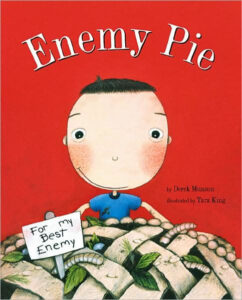 Enemy Pie by Derek Munson, illustrated by Tara Calahan King (September 2000)
Enemy Pie by Derek Munson, illustrated by Tara Calahan King (September 2000)
From Goodreads: “It was the perfect summer. That is, until Jeremy Ross moved into the house down the street and became neighborhood enemy number one. Luckily Dad had a surefire way to get rid of enemies: Enemy Pie. But part of the secret recipe is spending an entire day playing with the enemy! In this funny yet endearing story, one little boy learns an effective recipes for turning your best enemy into your best friend. Accompanied by charming illustrations, Enemy Pie serves up a sweet lesson in the difficulties and ultimate rewards of making new friends.”
Pages: 40
Reading Age: 3–6
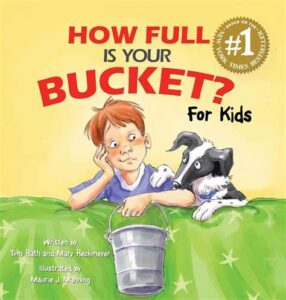 How Full Is Your Bucket? (for kids) by Tom Rath and Mary Reckmeyer, illustrated by Maurie J. Manning (April 2009)
How Full Is Your Bucket? (for kids) by Tom Rath and Mary Reckmeyer, illustrated by Maurie J. Manning (April 2009)
From Goodreads: “Through the story of a little boy named Felix, this charming book explains to children how being kind not only helps others, it helps them, too. As he goes about his day, Felix interacts with different people — his sister Anna, his grandfather, other family and friends. Some people are happy, but others are grumpy or sad. Using the metaphor of a bucket and dipper, Felix’ grandfather explains why the happy people make Felix feel good, while the others leave him feeling bad — and how Felix himself is affecting others, whether he means to or not. This beautifully illustrated adaptation takes the original book’s powerful message — that the way we relate to others has a profound effect on every aspect of our lives — and tailors it to a child’s unique needs and level of understanding.”
Pages: 32
Reading Age: 3–7
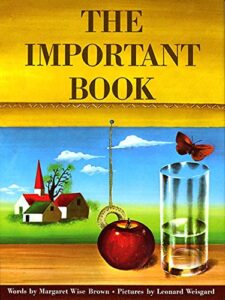 The Important Book by Margaret Wise Brown, illustrated by Leonard Weisgard (May 1999)
The Important Book by Margaret Wise Brown, illustrated by Leonard Weisgard (May 1999)
From Goodreads: “Goodnight Moon creator Margaret Wise Brown’s The Important Book is a deceptively simple exercise–taking familiar things like an apple, spoon, or shoe, and finding the most basic association with those things. The most important thing about an apple? It is round. A spoon? You eat with it. A shoe? You put your foot in it. But why, according to Brown, is the most important thing about grass “that it is green,” while the most important thing about an apple is “that it is round”? Why is “that it is white” the most important thing about snow and a daisy? Whether or not you’d distill these things in the same way that the author does, Brown makes us think about the essence of everyday entities in new ways. The illustrations, by Caldecott Medal winner Leonard Weisgard (The Little Island), perform the same function–capturing the spoonness of spoons, the roundness of an apple, the motion of wind.”
Pages: 24
Reading Age: 4–9
The Invisible Boy by Trudy Ludwig, illustrated by Patrice Barton (October 2013)
From Goodreads: “Meet Brian, the invisible boy. Nobody ever seems to notice him or think to include him in their group, game, or birthday party… until, that is, a new kid comes to class.
When Justin, the new boy, arrives, Brian is the first to make him feel welcome. And when Brian and Justin team up to work on a class project together, Brian finds a way to shine.
From esteemed author and speaker Trudy Ludwig and acclaimed illustrator Patrice Barton, this gentle story shows how small acts of kindness can help children feel included and allow them to flourish. Any parent, teacher, or counselor looking for material that sensitively addresses the needs of quieter children will find The Invisible Boy a valuable and important resource.”
Pages: 40
Reading Age: 5–8
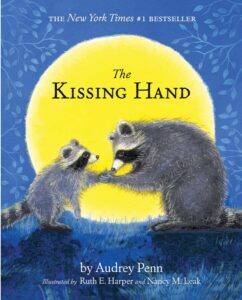 The Kissing Hand by Audrey Penn, illustrated by Ruth E. Harper and Nancy M. Leak (January 2003)
The Kissing Hand by Audrey Penn, illustrated by Ruth E. Harper and Nancy M. Leak (January 2003)
From Goodreads: “Chester Raccoon is very scared and nervous about his first day of school. His mom helps to solve his anxiety in a very special way that involves the kissing hand.”
Pages: 32
Reading Age: 2–6
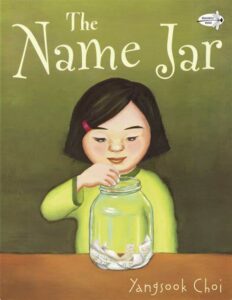 The Name Jar by Yangsook Choi (October 2003)
The Name Jar by Yangsook Choi (October 2003)
From Goodreads: “The new kid in school needs a new name! Or does she?
Being the new kid in school is hard enough, but what about when nobody can pronounce your name? Having just moved from Korea, Unhei is anxious that American kids will like her. So instead of introducing herself on the first day of school, she tells the class that she will choose a name by the following week.
Her new classmates are fascinated by this no-name girl and decide to help out by filling a glass jar with names for her to pick from. But while Unhei practices being a Suzy, Laura, or Amanda, one of her classmates comes to her neighborhood and discovers her real name and its special meaning.
On the day of her name choosing, the name jar has mysteriously disappeared. Encouraged by her new friends, Unhei chooses her own Korean name and helps everyone pronounce it—Yoon-Hey.”
Pages: 40
Reading Age: 3–6
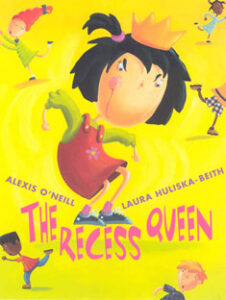 The Recess Queen by Alexis O’Neill, illustrated by Laura Huliska-Beith (February 2002)
The Recess Queen by Alexis O’Neill, illustrated by Laura Huliska-Beith (February 2002)
From Goodreads: “A fresh & original twist on the common issue of bullying. Kids will relate, & parents & teachers will appreciate the story’s deft handling of conflict resolution (which happens w/o adult intervention) Mean Jean was Recess Queen and nobody said any different. Nobody swung until Mean Jean swung. Nobody kicked until Mean Jean kicked. Nobody bounced until Mean Jean bounced. If kids ever crossed her, she’d push ’em and smoosh ’em lollapaloosh ’em, hammer ’em, slammer ’em kitz and kajammer ’em. Until a new kid came to school! With her irrepressible spirit, the new girl dethrones the reigning recess bully by becoming her friend in this infectious playground romp.”
Pages: 32
Reading Age: 5–7
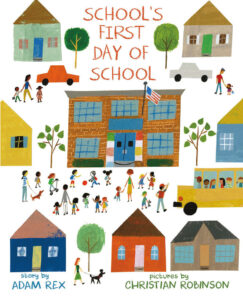 School’s First Day of School by Adam Rex, illustrated by Christian Robinson (June 2016)
School’s First Day of School by Adam Rex, illustrated by Christian Robinson (June 2016)
From Goodreads: “It’s the first day of school at Frederick Douglass Elementary and everyone’s just a little bit nervous, especially the school itself. What will the children do once they come? Will they like the school? Will they be nice to him?
The school has a rough start, but as the day goes on, he soon recovers when he sees that he’s not the only one going through first-day jitters.”
Pages: 40
Reading Age: 5–6


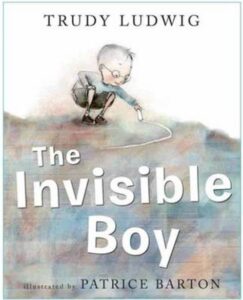
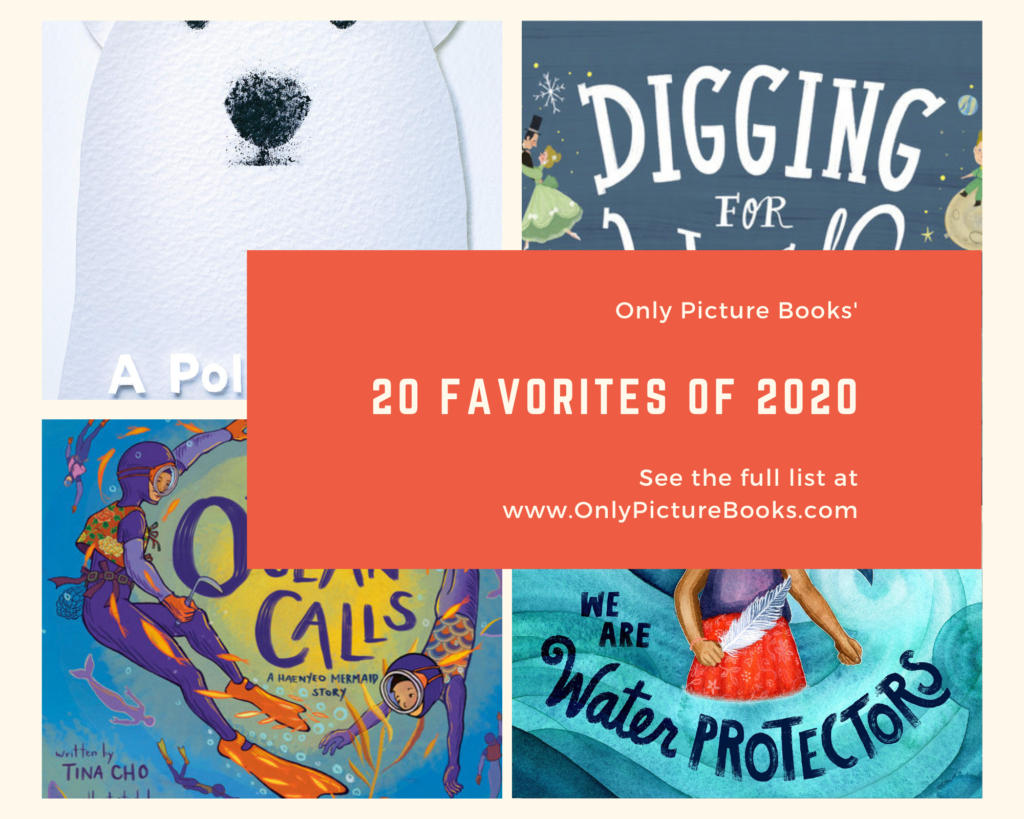
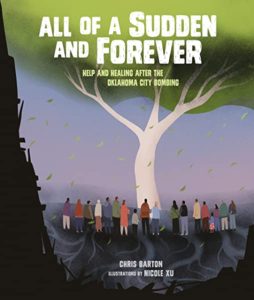 All of a Sudden and Forever
All of a Sudden and Forever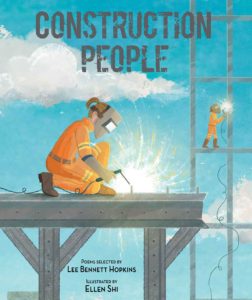
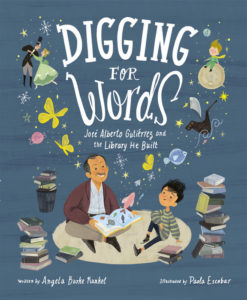 Digging for Words: J
Digging for Words: J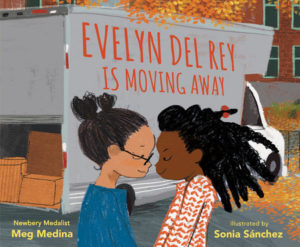
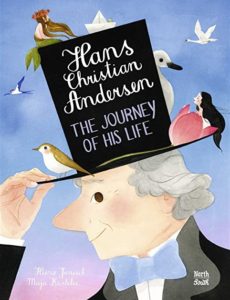
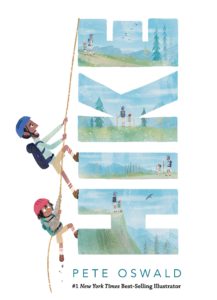
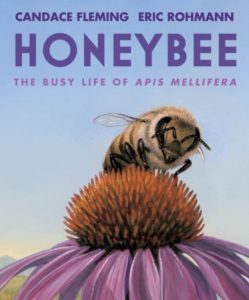
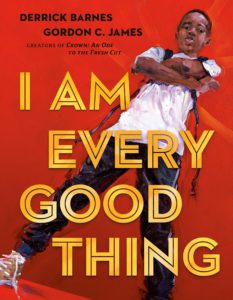
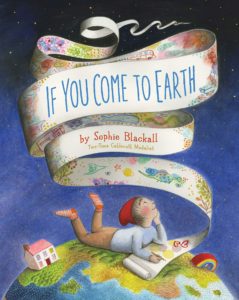
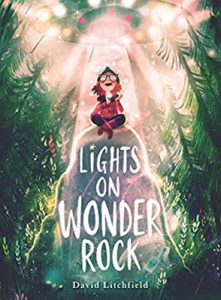
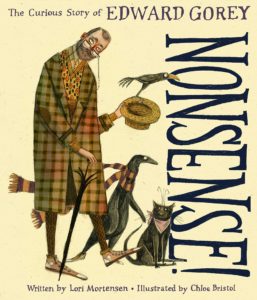
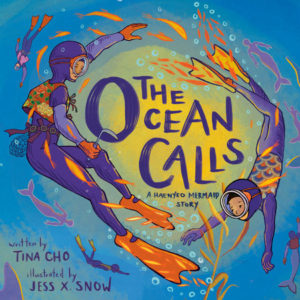
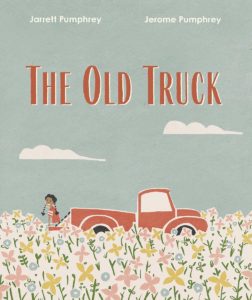
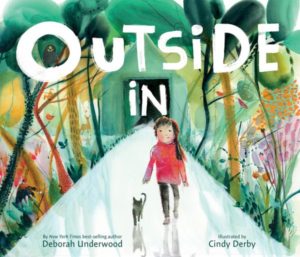
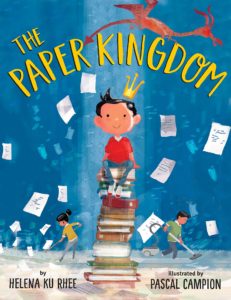
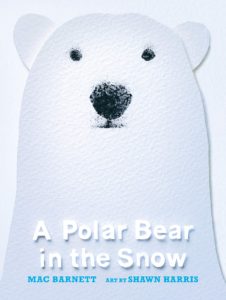
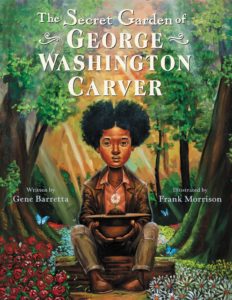 The Secret Garden of George Washington Carver
The Secret Garden of George Washington Carver